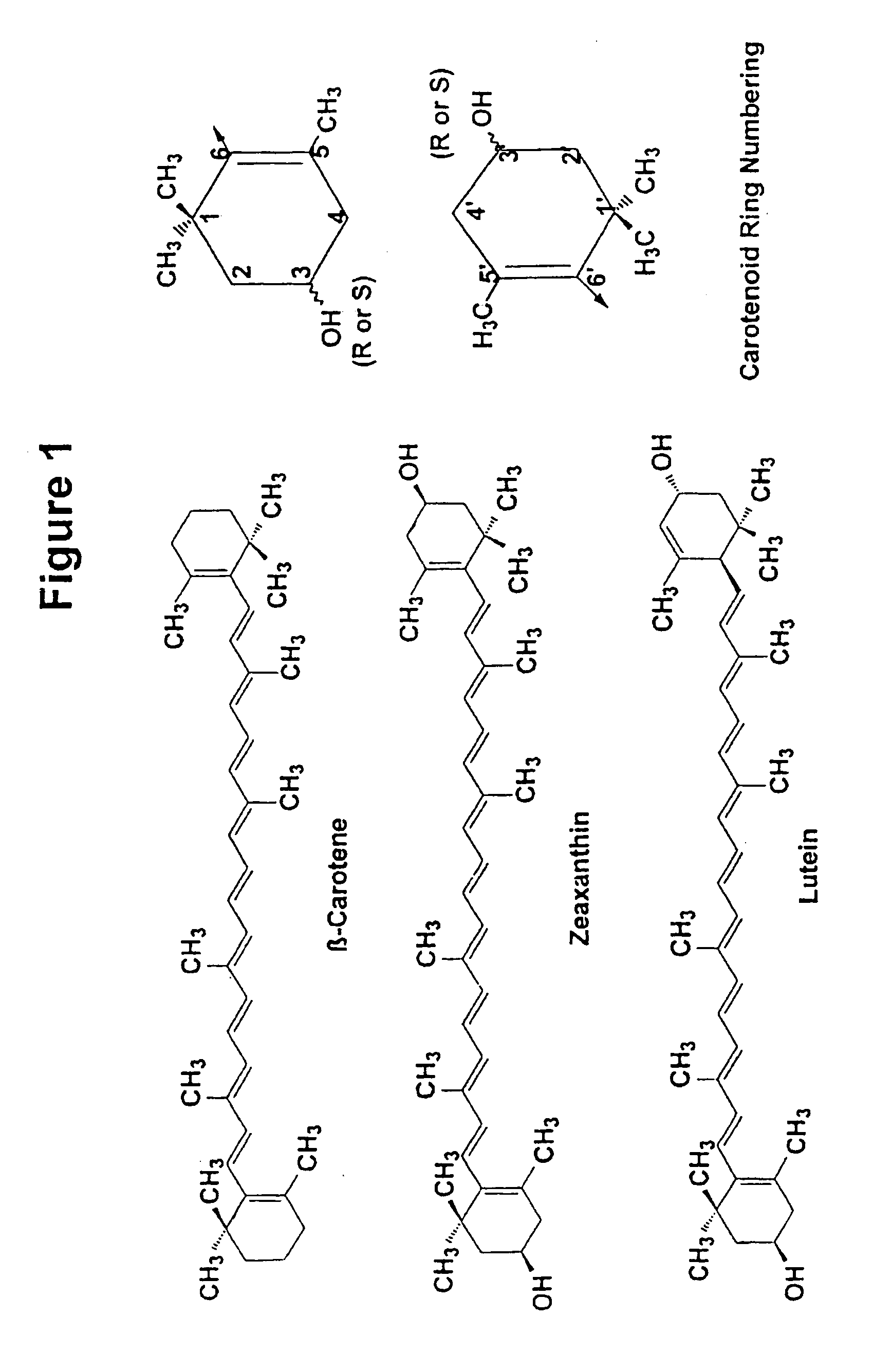Use of zeaxanthin to reduce light hyper-sensitivity, photophobia, and medical conditions relating to light hyper-sensitivity
a technology of zeaxanthin and zeaxanthin, which is applied in the field of dietary supplements, can solve the problems of not using the term “photophobia” in adequate ways, not adequately conveying the seriousness of the problems suffered by people, and reducing light hypersensitivity, so as to reduce light hypersensitivity, reduce light hypersensitivity, and reduce the effect of light hypersensitivity
- Summary
- Abstract
- Description
- Claims
- Application Information
AI Technical Summary
Benefits of technology
Problems solved by technology
Method used
Image
Examples
Embodiment Construction
[0035] Zeaxanthin has been discovered to be effective, in at least some people, in reducing light hyper-sensitivity. As used herein, the term “light hyper-sensitivity” includes conditions that are triggered or aggravated by direct sunlight or other bright, flickering, or other light exposures or patterns, which induces visual stress of a type that generates a serious and substantial degree of fatigue, annoyance, or other problems (including headaches, seizures, etc.) that are sufficiently severe to cause the sufferer to seek medical relief or other active intervention, above and beyond the wearing of sunglasses or other protective lenses. Light hyper-sensitivity also includes problems relating to glare, and impaired glare recovery.
[0036] While some people may benefit from dosages as low as 1 mg / day, preferred dosages for treating people who suffer from this condition are in the range of about 3 to about 100 mg per day. These dosages can be conveniently achieved via 10 mg capsules, ...
PUM
| Property | Measurement | Unit |
|---|---|---|
| optical density | aaaaa | aaaaa |
| frequency | aaaaa | aaaaa |
| photosensitivity | aaaaa | aaaaa |
Abstract
Description
Claims
Application Information
 Login to View More
Login to View More - R&D
- Intellectual Property
- Life Sciences
- Materials
- Tech Scout
- Unparalleled Data Quality
- Higher Quality Content
- 60% Fewer Hallucinations
Browse by: Latest US Patents, China's latest patents, Technical Efficacy Thesaurus, Application Domain, Technology Topic, Popular Technical Reports.
© 2025 PatSnap. All rights reserved.Legal|Privacy policy|Modern Slavery Act Transparency Statement|Sitemap|About US| Contact US: help@patsnap.com

